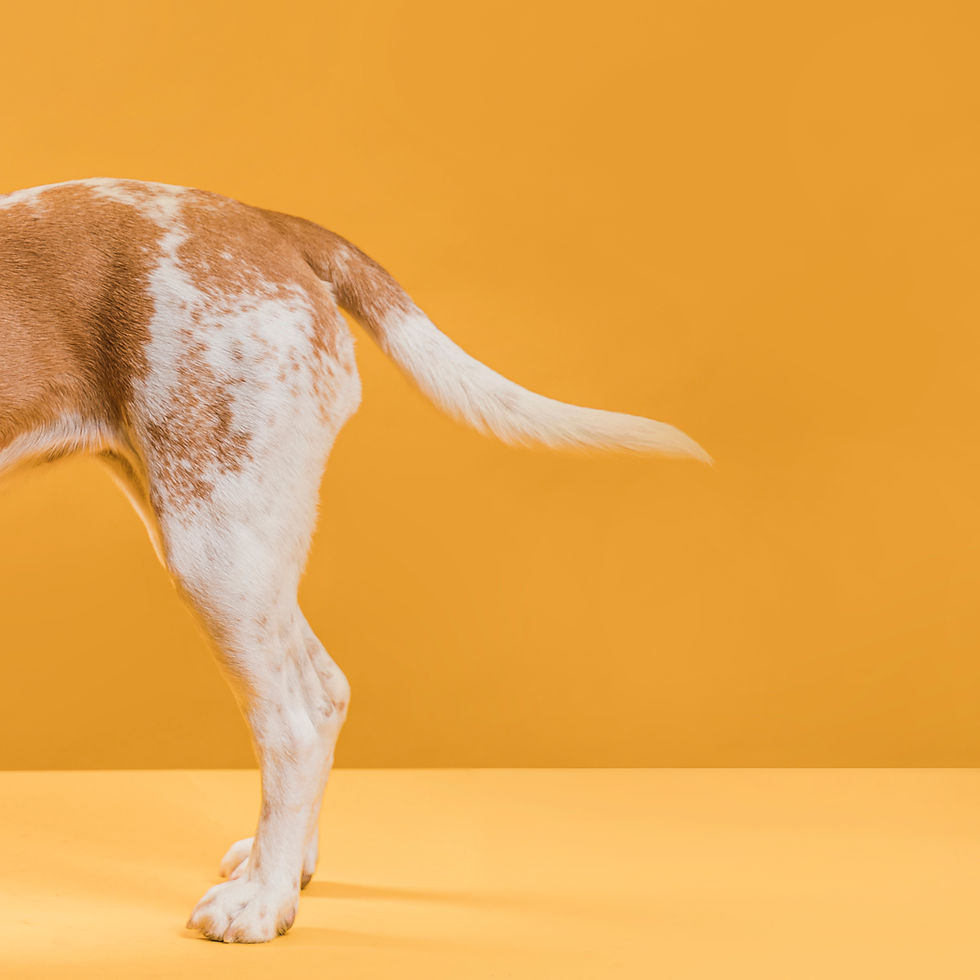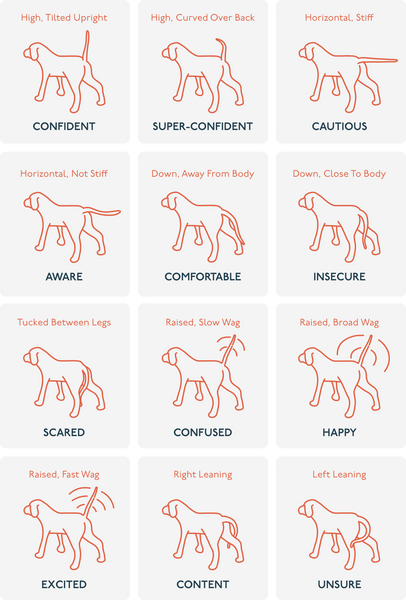Why Do Dogs Wag Their Tails?
- Animal Echo

- Aug 6
- 4 min read
Most people think that dogs wag their tails when happy, and cats wag their tails when angry - but this might not be true

Short answer: Simply put, it’s a form of communication and expression of emotions and intentions. And no – it’s not just because they are happy! Tail wagging is quite a complex behaviour, and while a fast wag does generally indicate excitement or happiness, a stiffer high wag can be a sign of arousal and a long, slow wag can indicate fear, uncertainty or insecurity.
Long answer: While the above explanation will satisfy many pet owners and dog lovers, it is only the beginning. Think social interactions – if your dog (or someone else’s) is at the park and comes across another canine, what do they do? If they’re a confident, playful type and/or they know the other dog, you’ll likely see a quickly wagging tail paired with other behaviours and body language. They’ll have a forward, optimistic stance, pricked ears, an overall ‘pleased’ expression and will often pair this with a quick greeting followed by running and playing. However, if the dog is shy, doesn’t know the other dog or is simply uncomfortable in the setting, you’ll often see a slow wag paired with a retreating, or ‘on the back foot’ type of stance. A slow wag will usually result in a slower interaction, and you may even find the dog glancing at their owner for guidance and support. Note that a slow wag is not the same as a gentle wag! The gentle wag will be accompanied by a softer, more relaxed stance and indicates contentment and security.

Frequently Asked Questions:
Why do dogs have tails?
Tails are a vital body part for dogs, contributing to balance, movement and communication. However, they also serve some less obvious purposes, like fending off insects and helping spread the dog’s scent.
Do wolves wag their tails?
Yes, wolves do wag their tails - but not as frequently as dogs. So why do dogs wag their tails more than wolves? This is mostly because of selective breeding by humans, who may - intentionally or not - have selected dogs for breeding based on greater tail wagging behaviour. A friendly, outgoing nature, willingness to communicate with humans and tameness are all desirable traits for 'man's best friend', and it is possible that tail wagging was associated with these traits.
Can dogs with curly tails still wag them?
Yes, dogs with curly tails can still wag them and use them to communicate, even if subtle cues may be slightly harder to read. Interestingly, despite curly tails being a largely human-made intervention, dogs do have specific ways of communicating with tails that are curly. The tightness of the curl is often influenced by mood; a tail curled gently over the dog’s back indicates a happy and relaxed state, while if he is very happy or excited, he may wag his tail so hard that it straightens out. Conversely, if a curly tail is held straight and low, this can indicate that the dog is stressed or feeling unwell.
When do puppies start wagging their tails?
Puppies start to do this at around 3-4 weeks of age, depending on the breed.
What is tail docking?
Tail docking is surgical removal of part or all of a dog’s tail. This was originally done with some working dogs to prevent tail damage during hunting or herding, but for some it was introduced for aesthetic reasons, or to conform to breed standards. The latter is now frowned upon as the practice is considered inhumane, and tail docking is banned in many countries for that reason.
Can dogs with docked tails still communicate?
Yes, but they are at a disadvantage. Owners and other dogs alike will struggle to read the tail language of a dog with a docked tail, particularly if the tail is docked close to the body. This makes it extra important to look for any additional body language and listen for vocal communication like whining or barking.
Can dogs of different breeds understand each other?
Yes, dogs do a pretty good job of understanding one another across, but it is important to socialise your puppy with plenty of different breeds when they are young. Make sure the dogs you choose are well-behaved and friendly, as this will give your puppy the best experience and set a good example for them.
Why do dogs chase their tails?
Quite a bit of research has been done into this, but there is no definitive answer. A dog may chase their tail in play, as a means of expelling energy, due to anxiety or boredom, or even to try to deal with fleas. To get to the bottom of why your dog is chasing his or her tail, look at their other body language and behaviour. Does the dog seem stressed or simply playful, and what does he or she do if the tail is caught? This will help you determine whether the behaviour is anything to worry about.










Comments